It’s all design: Vitra Design Museum explores the Bauhaus legacy
Vitra presents the first comprehensive overview of the Bauhaus, now on show in Weil am Rhein as part of their Design Museum’s ongoing programme of exhibitions. Including objects and furniture as well as art, film and photography, many of the pieces on display have never been seen before, presenting a new perspective on the influential design school and its productions.
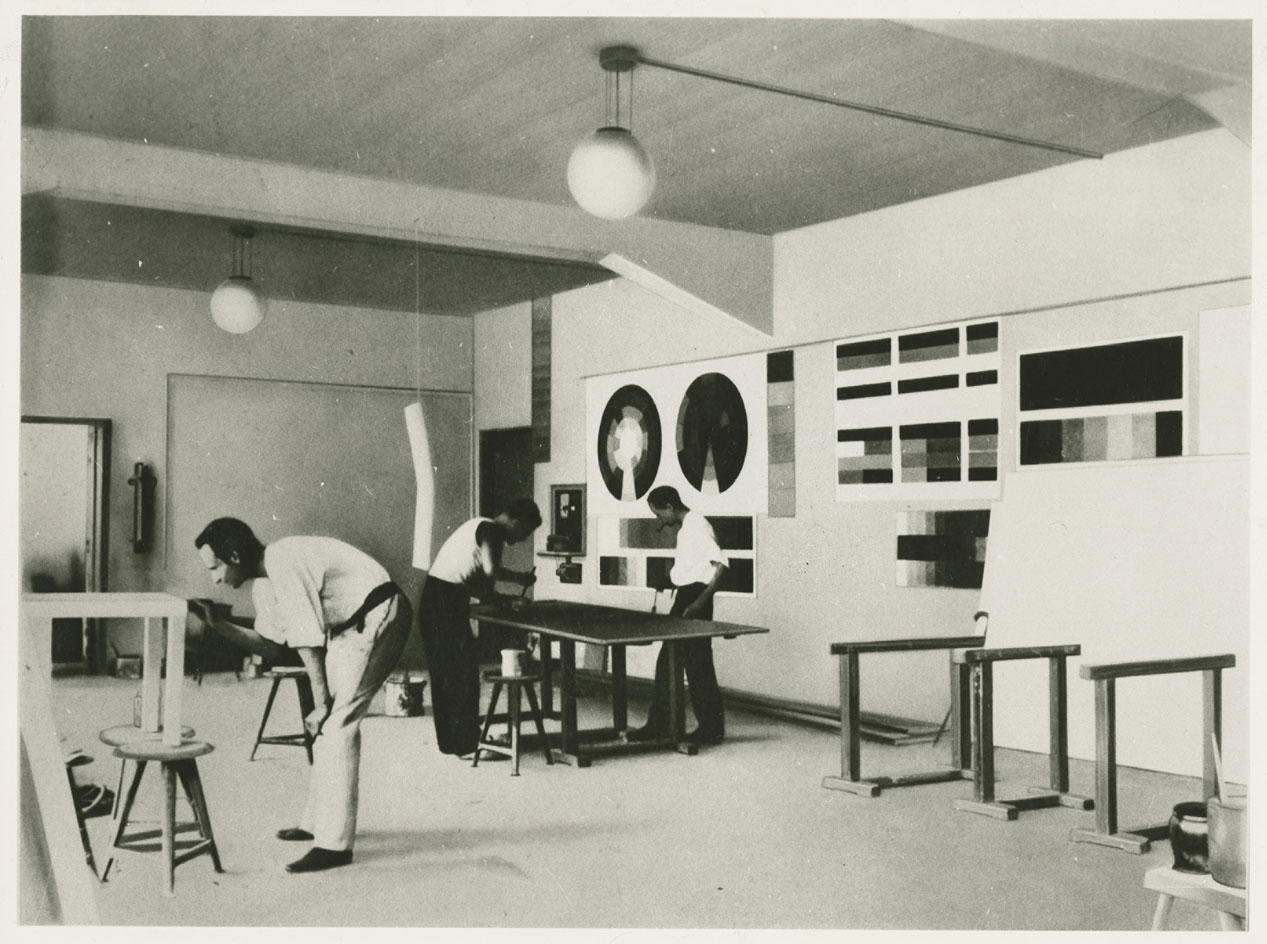
Vitra presents the first comprehensive overview of the Bauhaus, now on show in Weil am Rhein as part of their Design Museum’s ongoing programme of exhibitions. Including objects and furniture as well as art, film and photography, many of the pieces on display have never been seen before, presenting a new perspective on the influential design school and its productions.
Founded in 1919 by Walter Gropius in Weimar, the Bauhaus set the stage for design and almost a century later its principles are still observed and celebrated. Gropius and his colleagues gave students a creative and artisanal basis alongside notions of ergonomics, psychology and technology, ideas to be used as tools to shape society.
The exhibition develops like a journey, starting with an exploration of the historical and social context of the Bauhaus’ inception, while also showcasing some of the lauded furniture pieces and objects designed by its members. The show then shifts into a wider concept explored at the Bauhaus, featuring the school’s teachings and projects related to designing spaces; this section includes the notion of minimum dwellings, colour theories proposed by the likes of Josef Albers and spatial models developed within the institute. In the final section, the exhibition explores the Bauhaus’ communication material, from its avant garde typographical experiments to films produced at the school and photographs from its early days.
As well as an historical overview featuring archive material, the exhibition also offers a modern interpretation of the school's principles, through the works of contemporary creatives such as Enzo Mari, Konstantin Grcic, Hella Jongerius and Alberto Meda. To offer an up-to-date perspective on the Bauhaus and its legacy, the museum presents a series of works that demonstrate how its ambitious teachings have now become the norm for design professionals, contemporary pieces dotted throughout the exhibition to compare and contrast influences and tributes.
With an encyclopaedic route through the Bauhaus' legendary history, the exhibition is an essential tool to understand the school and its power over design, and is a fitting testimony to a still-strengthening legacy.
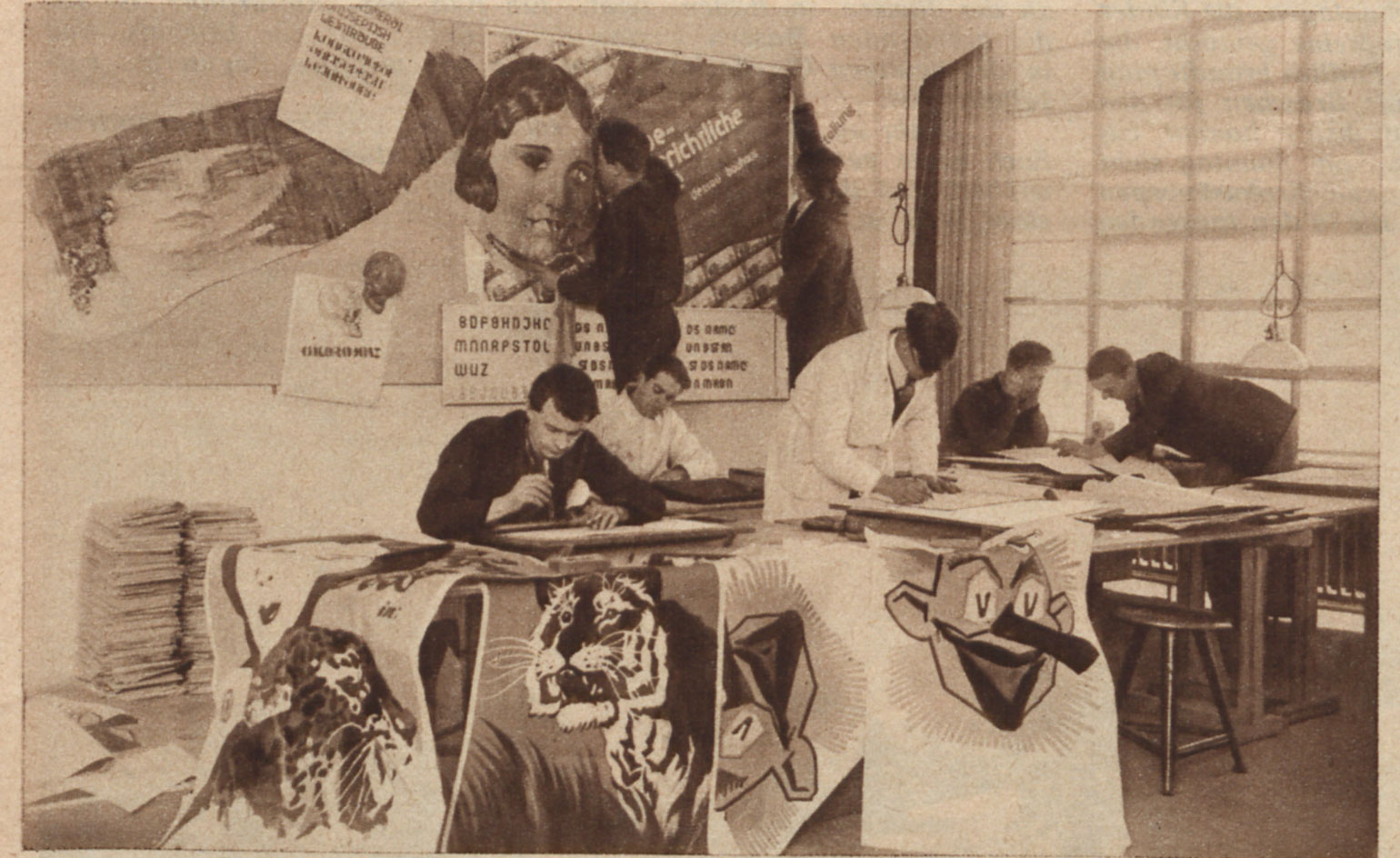
An archive image showing an advertising workshop in Dessau, 1926
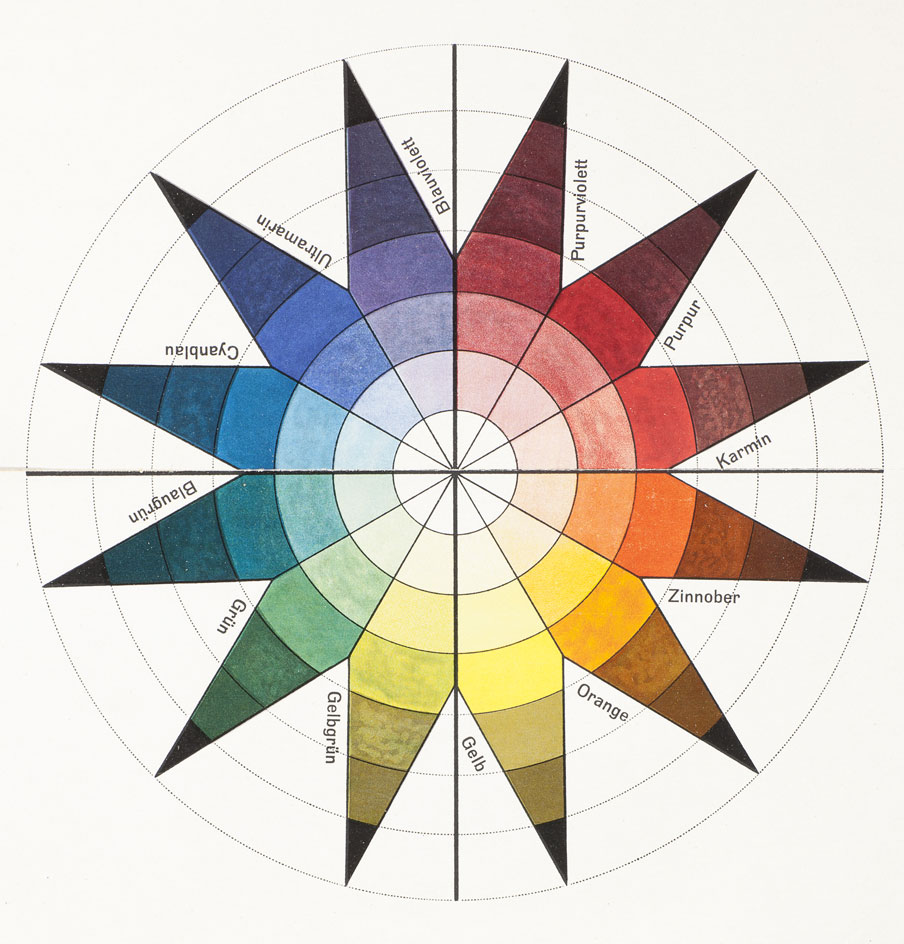
The show shifts into wider concepts explored at the Bauhaus, highlighting the school’s teachings and projects related to designing spaces: this section includes examples of colour theories proposed by, amongst others, Johannes Itten, whose colourwheel in seven shades and 12 tones is pictured here
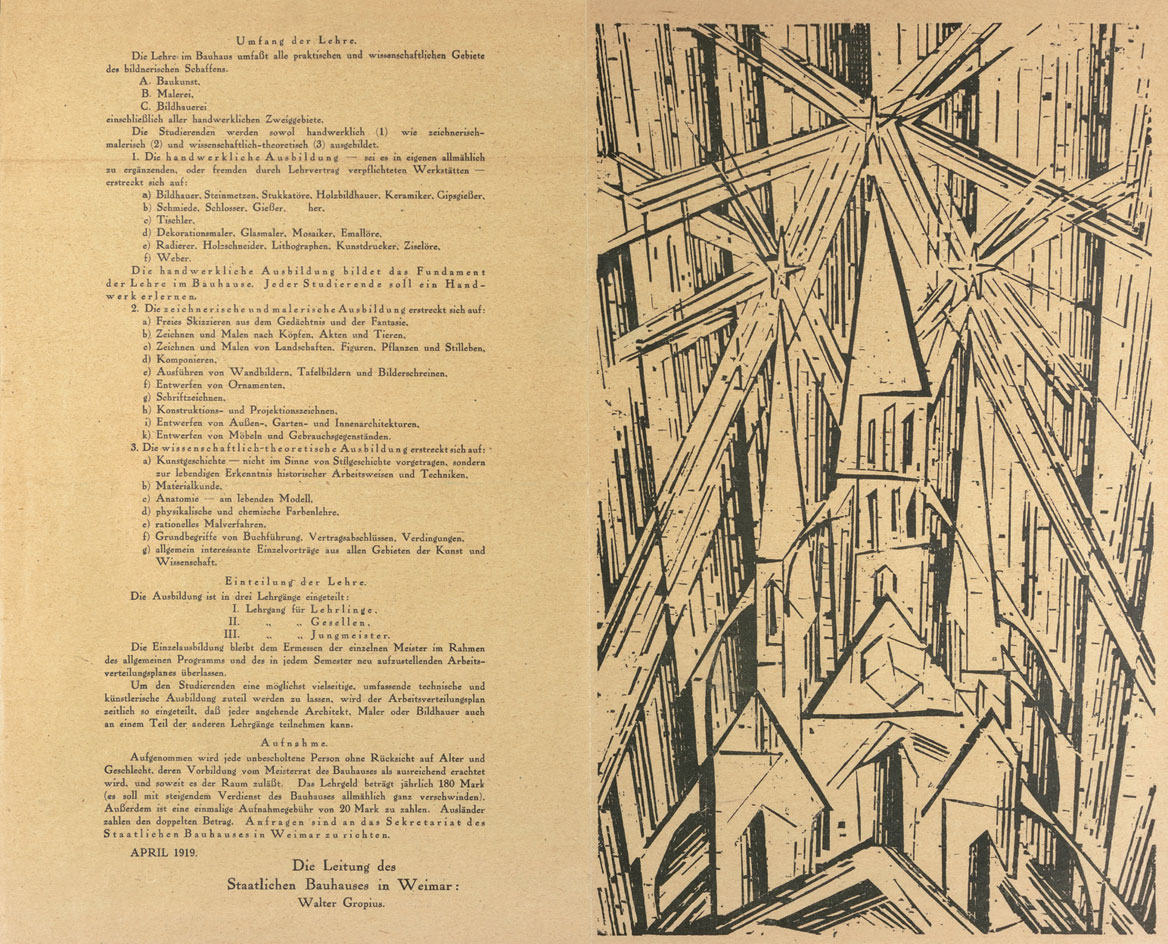
Upon opening the school, Walter Gropius penned a manifesto and programme defining the scope of the ’Staatliches Bauhaus in Weimar’
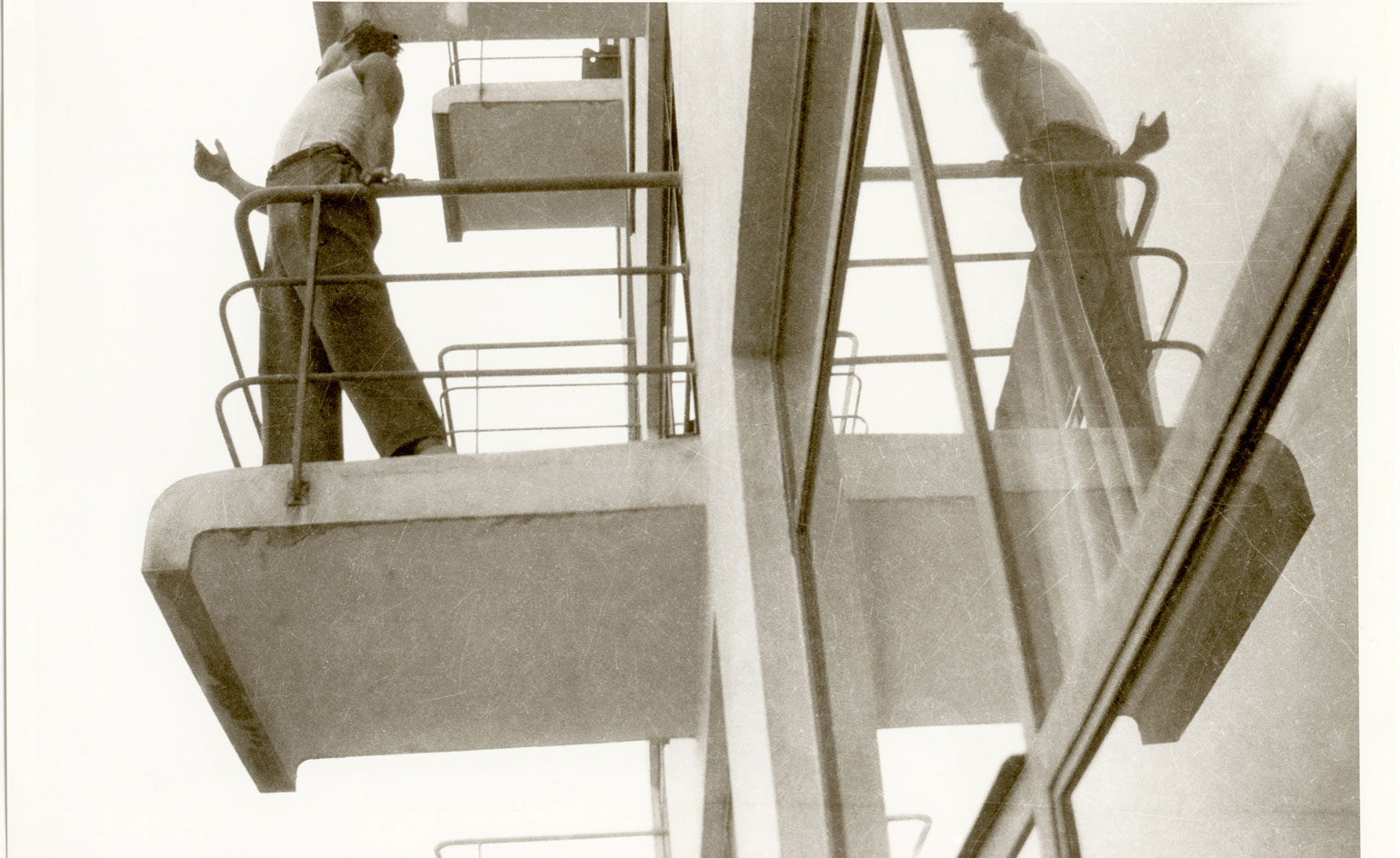
The exhibition features a wealth of archive images, such as this one from 1928 by Marianne Brandt, depicting a student on one of the Dessau building’s iconic terraces
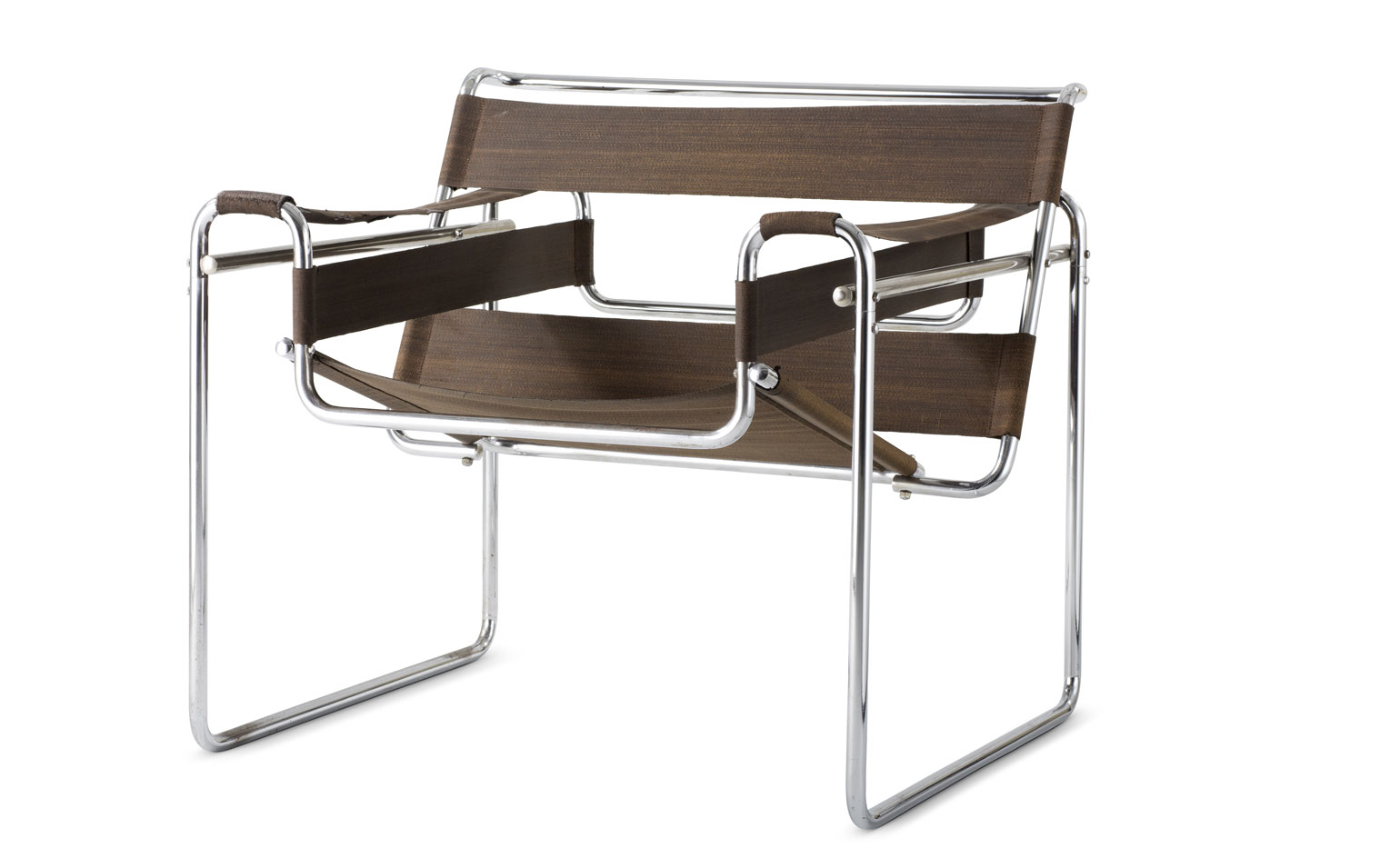
Better known as the ’Wassily’ chair (after painter Kandinsky), Marcel Breuer’s ’B3’ lounge chair is one of the most recognisable pieces of furniture to come out of the Bauhaus
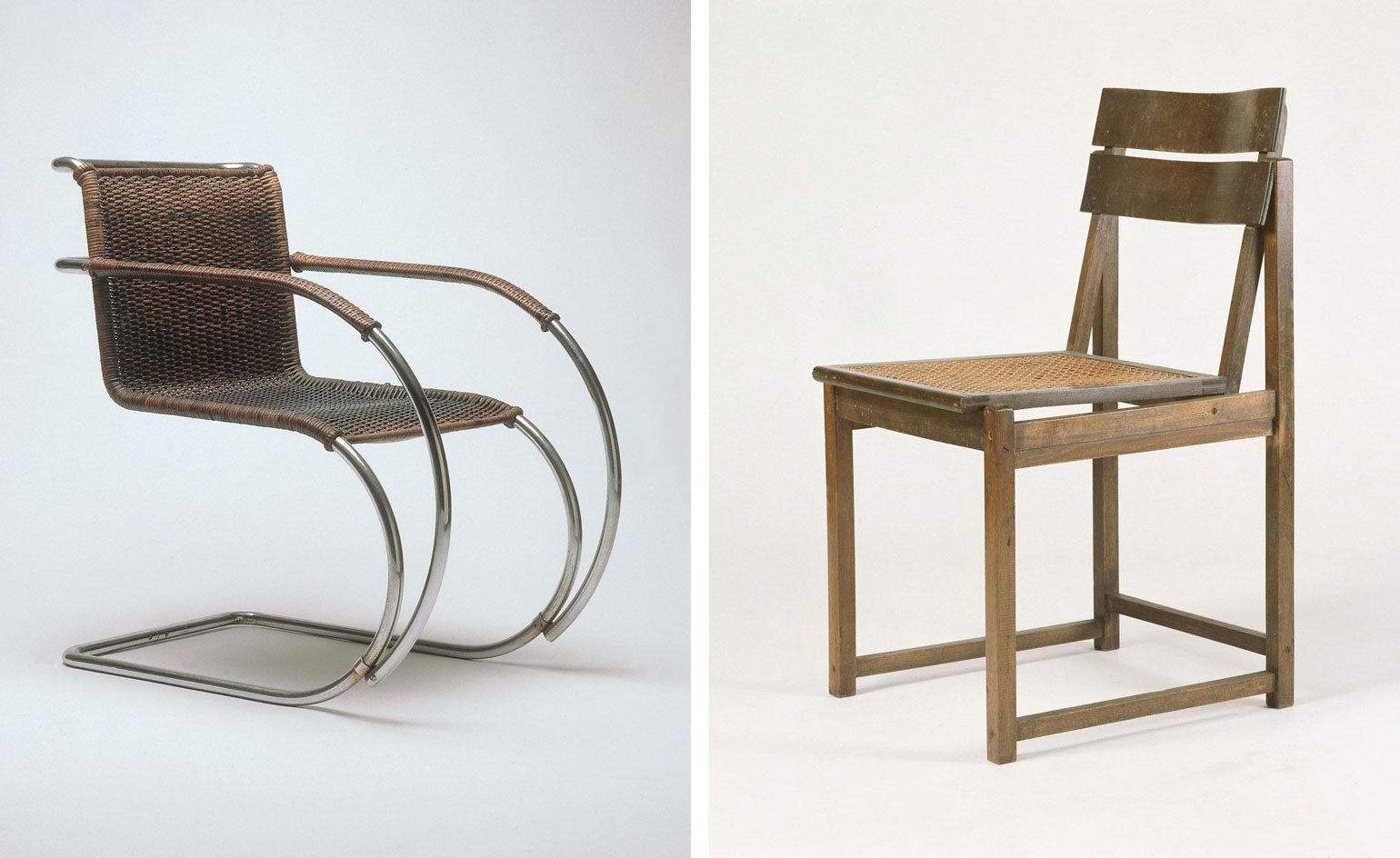
The archive furniture on display at the exhibition includes Ludwig Mies van der Rohe’s ’MR20’ (left) and Erich Dieckmann’s ’Typenstuhl’ (right), both created at the Bauhaus in 1927
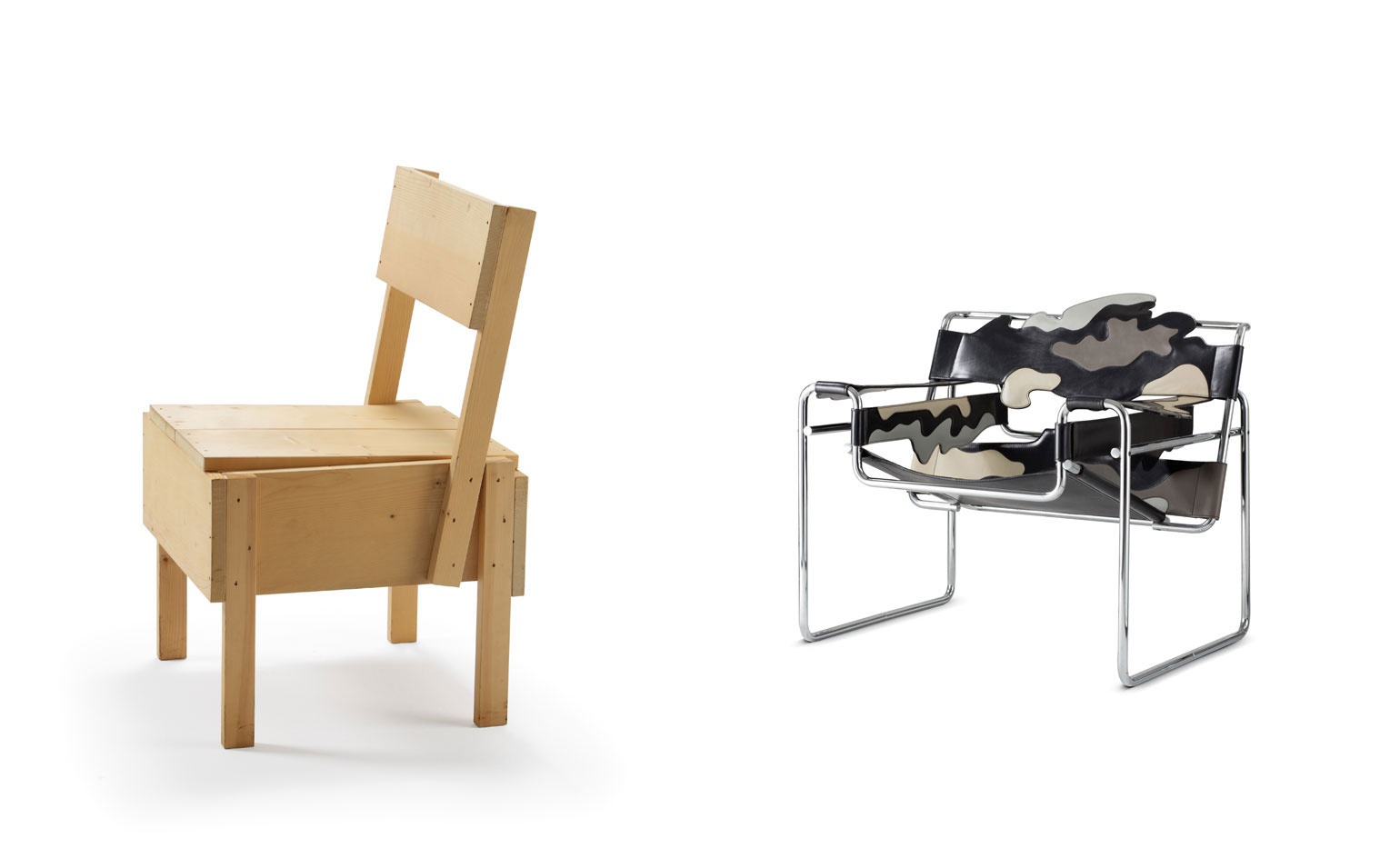
Modern interpretations of Bauhaus design principles feature Enzo Mari’s ’Proposta per un’autoprogettazione’ chair (left) and Alessandro Mendini’s tribute to the ’Wassily’ chair (right)
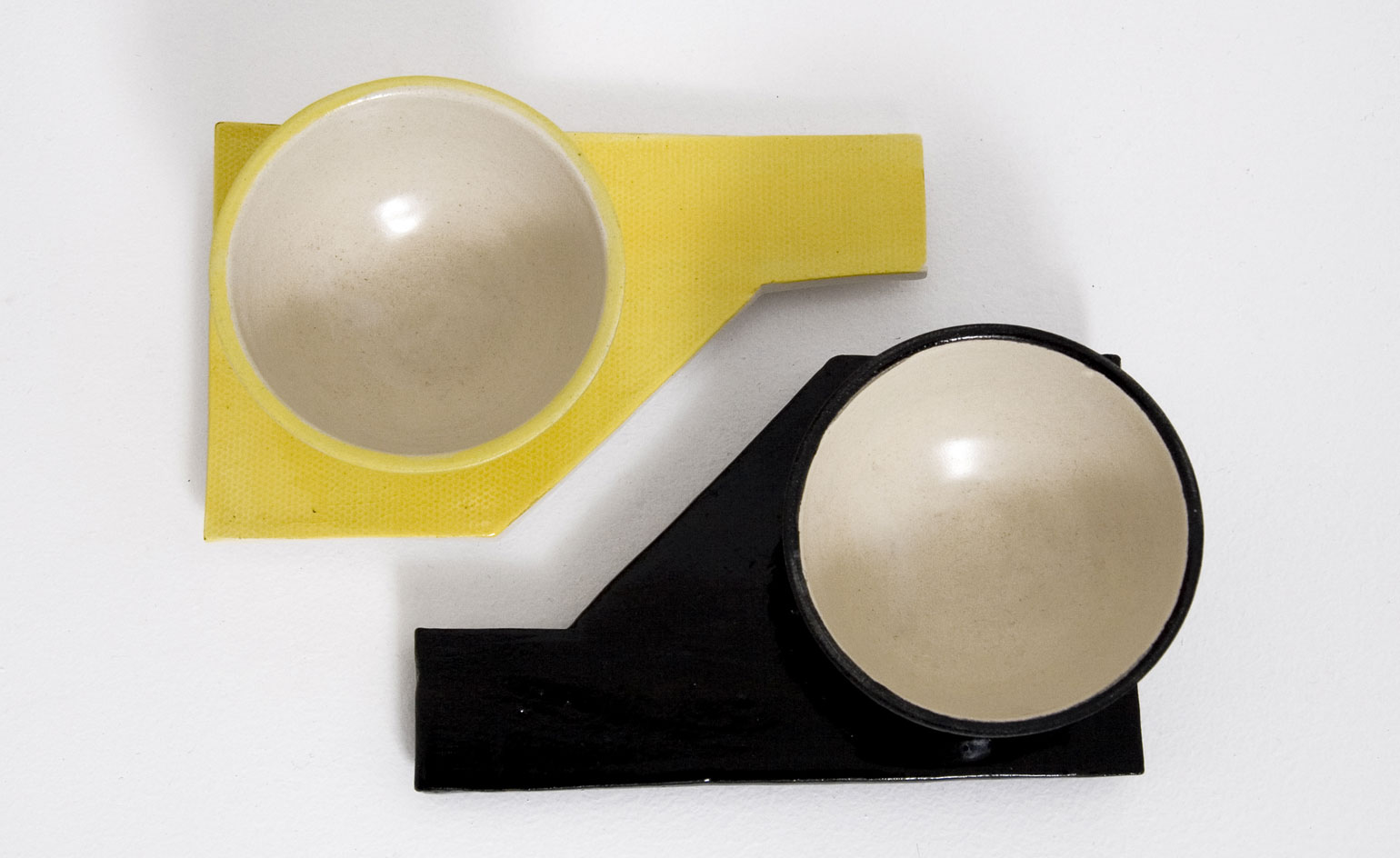
More contemporary designs are also on show, such as Dokter and Misses’ ’Heavy Metal’ cup and saucer from 2008
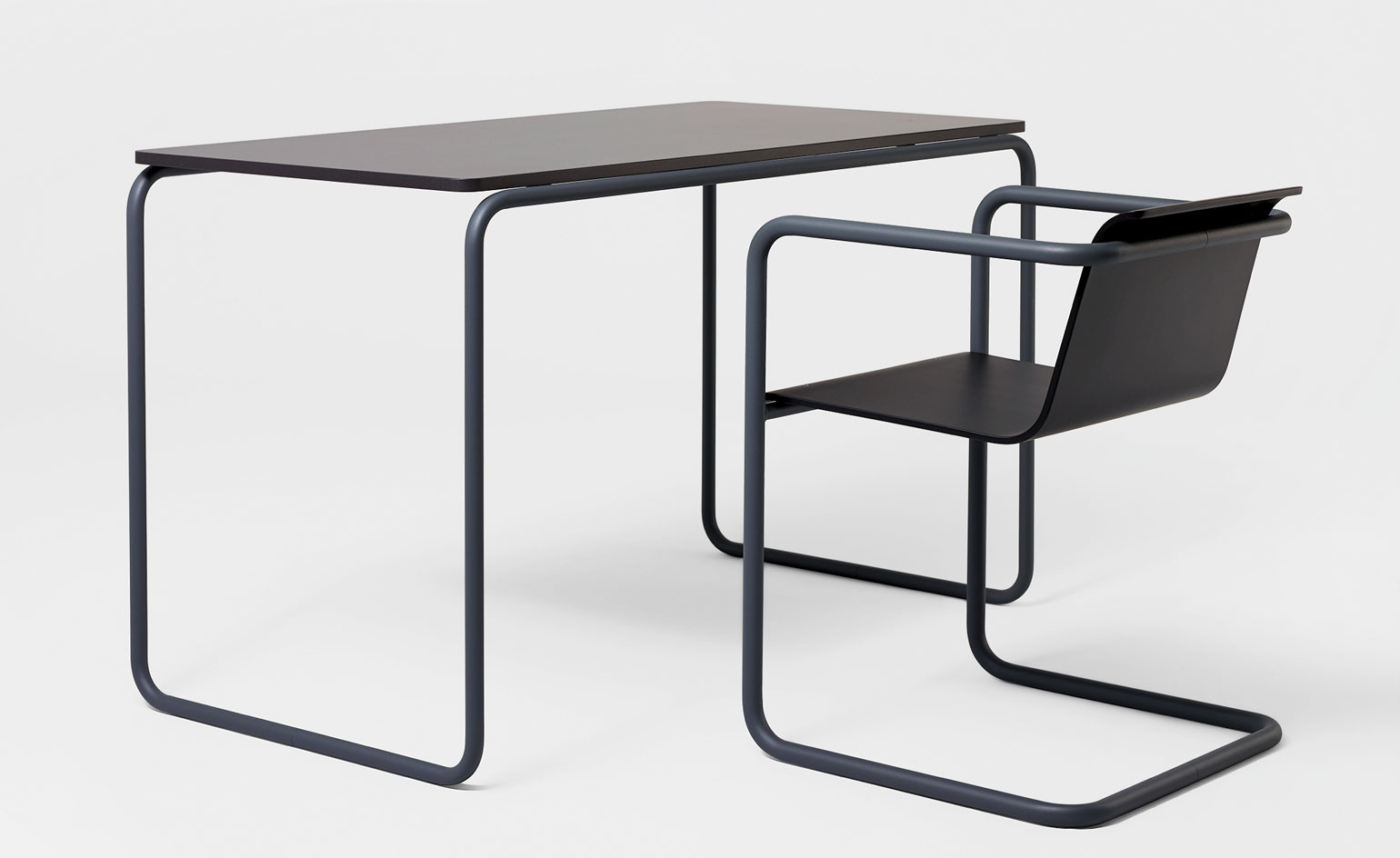
Konstantin Grcic’s ’Pipe’ table and chair combo from 2009 nods to the Bauhaus style of Marcel Breuer and Mies van der Rohe
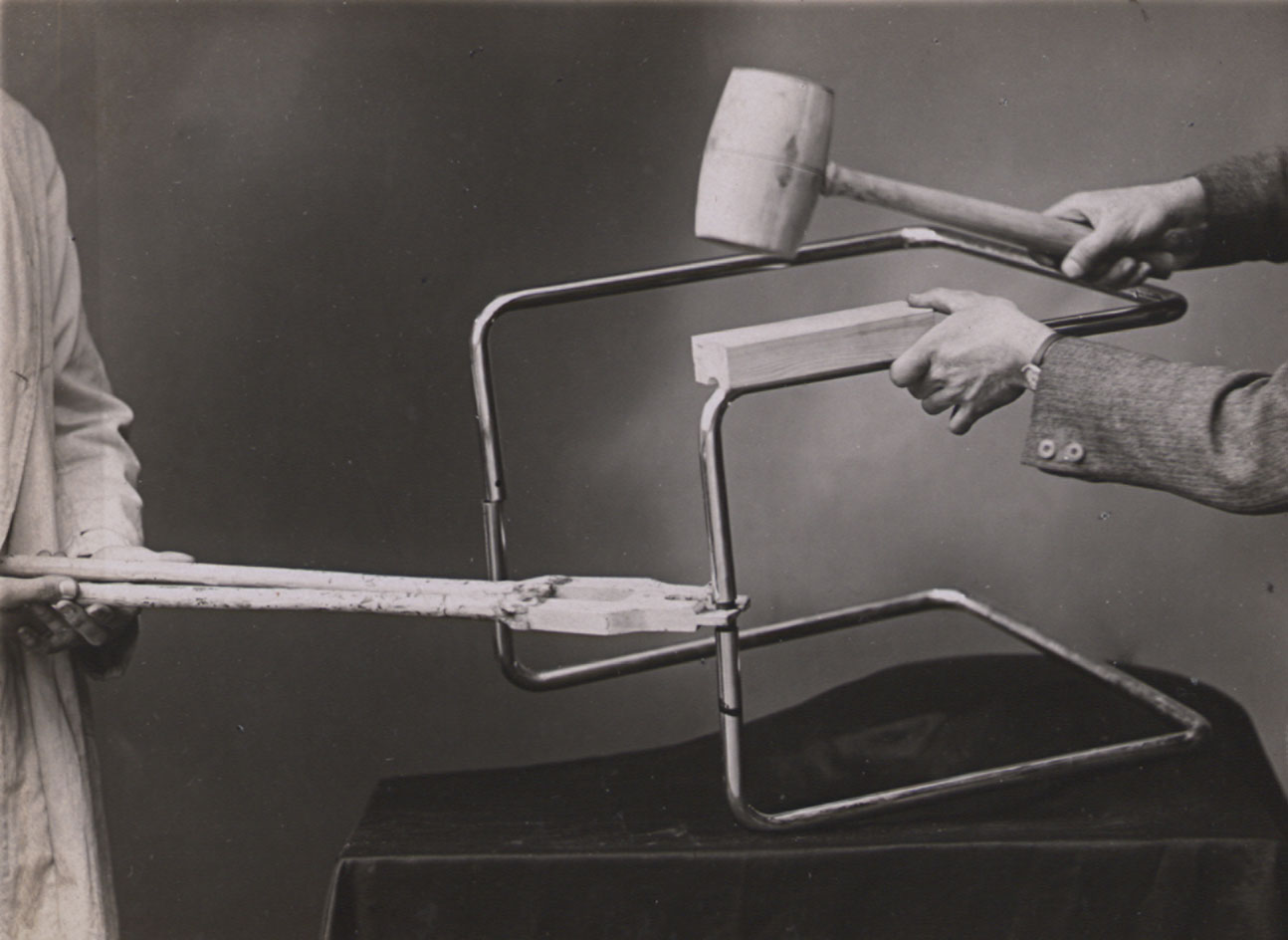
A photograph from a Thonet instruction manual published in 1935
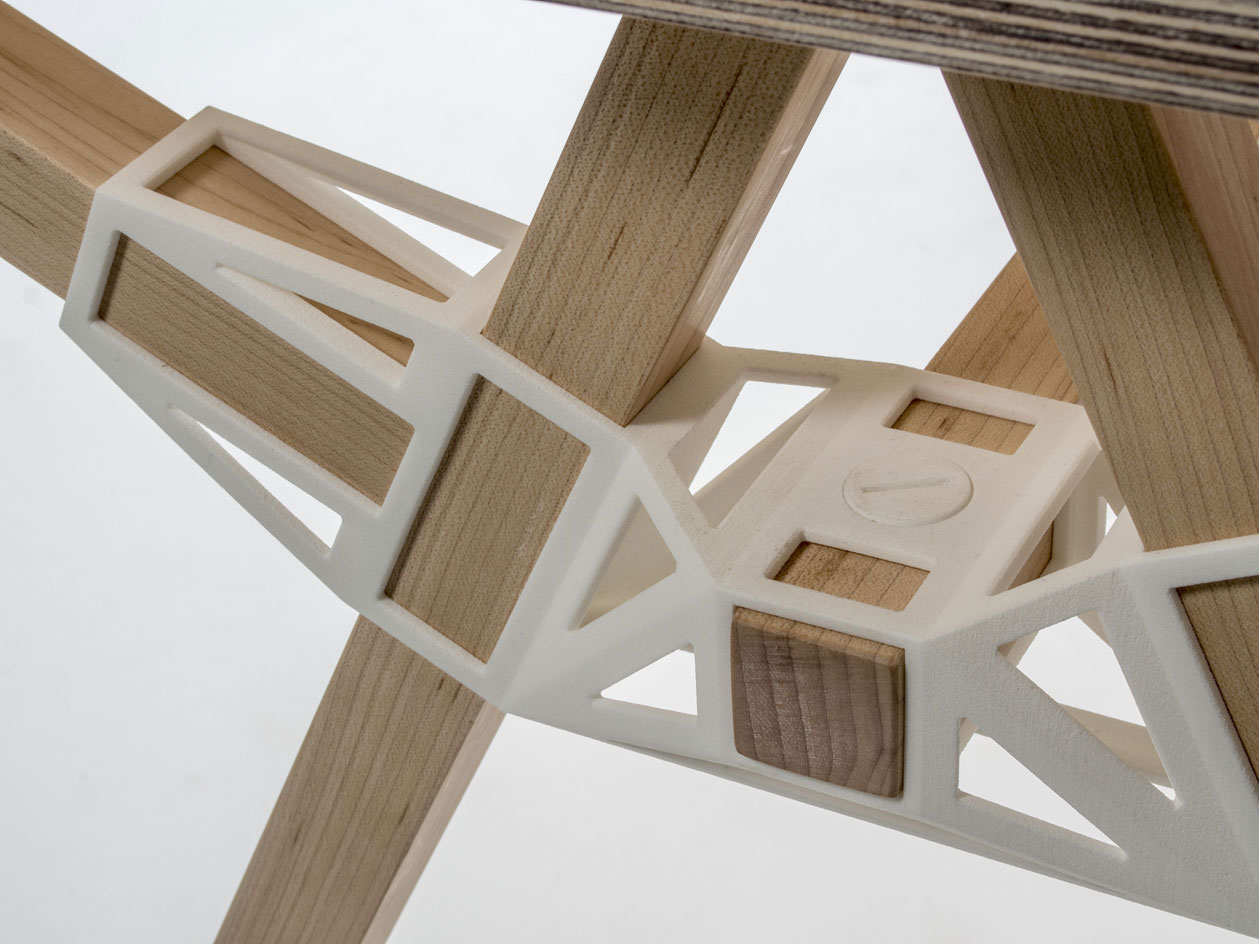
A detail of Studio Minale Maeda’s ’Keystones’ table, combining a wooden frame with 3D-printed joints
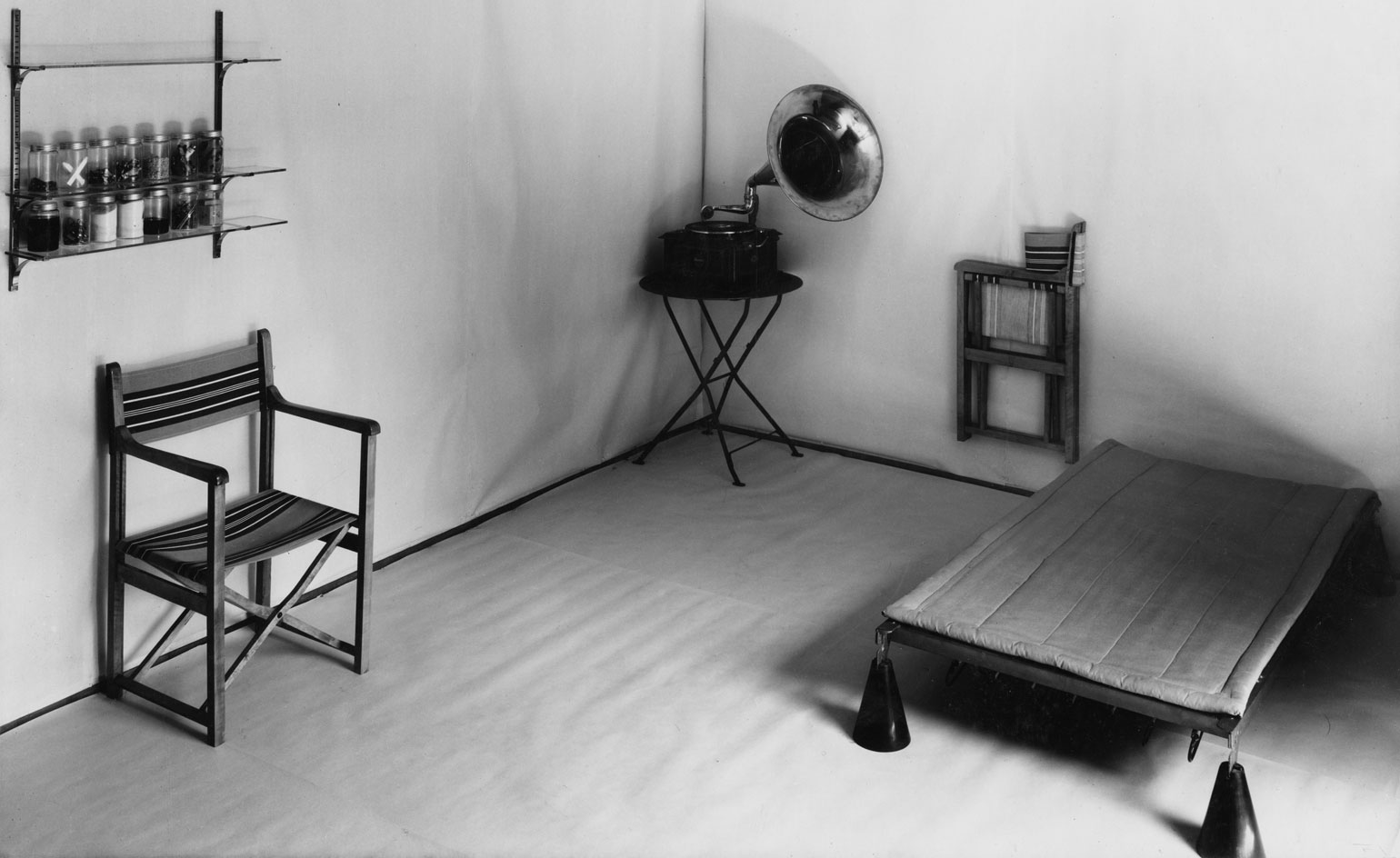
The exhibition includes displays of minimum dwelling and spatial notions developed within the school, such as Hannes Meyer’s Co-op room from 1926
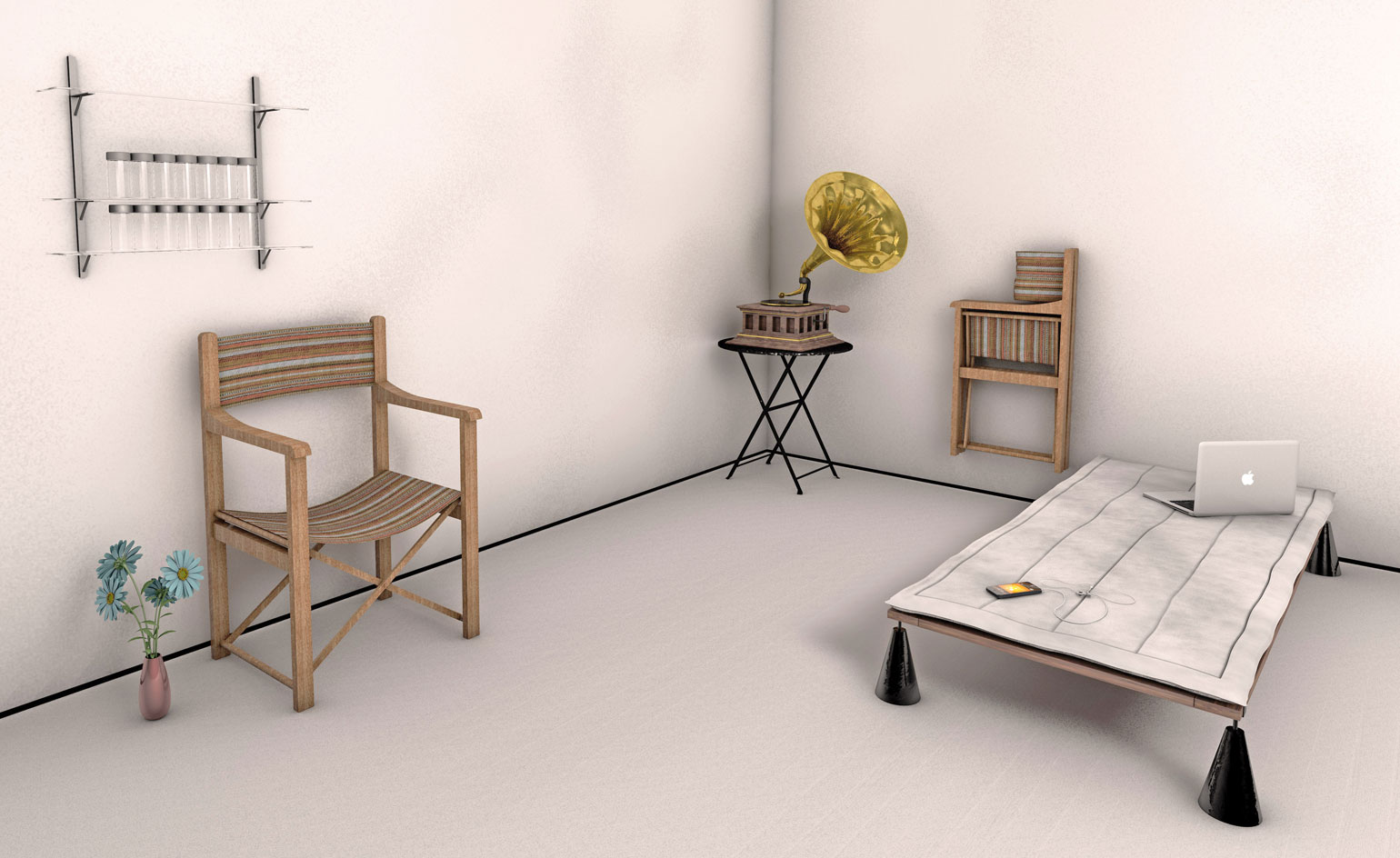
Next to it, there is a 2014 interpretation by AYRBRB
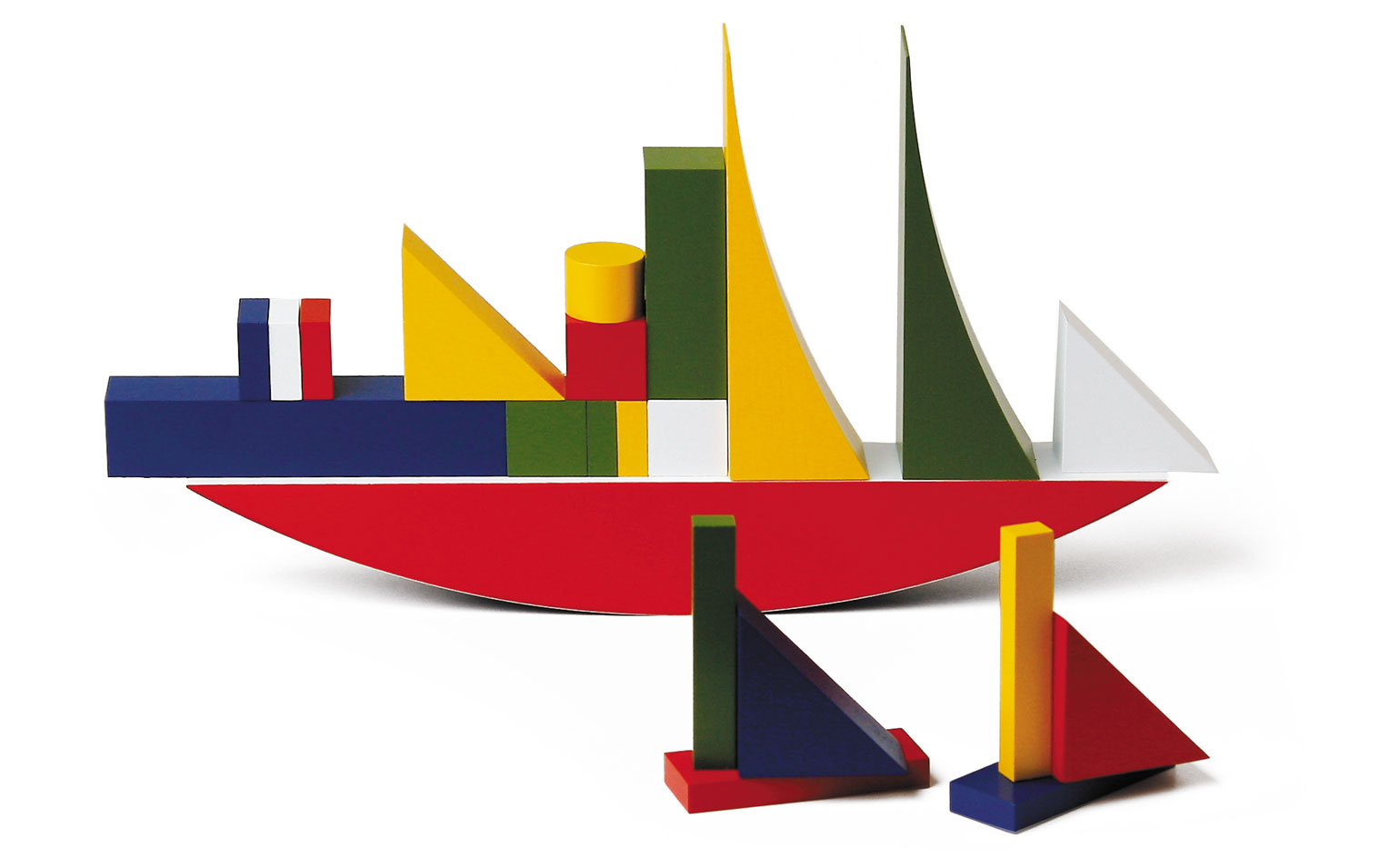
Construction blocks, by Alma Siedhoff-Buscher

Mechanical Ballet, by Kurt Schmidt, produced in 1923 with FW Bagler and G Teltscher
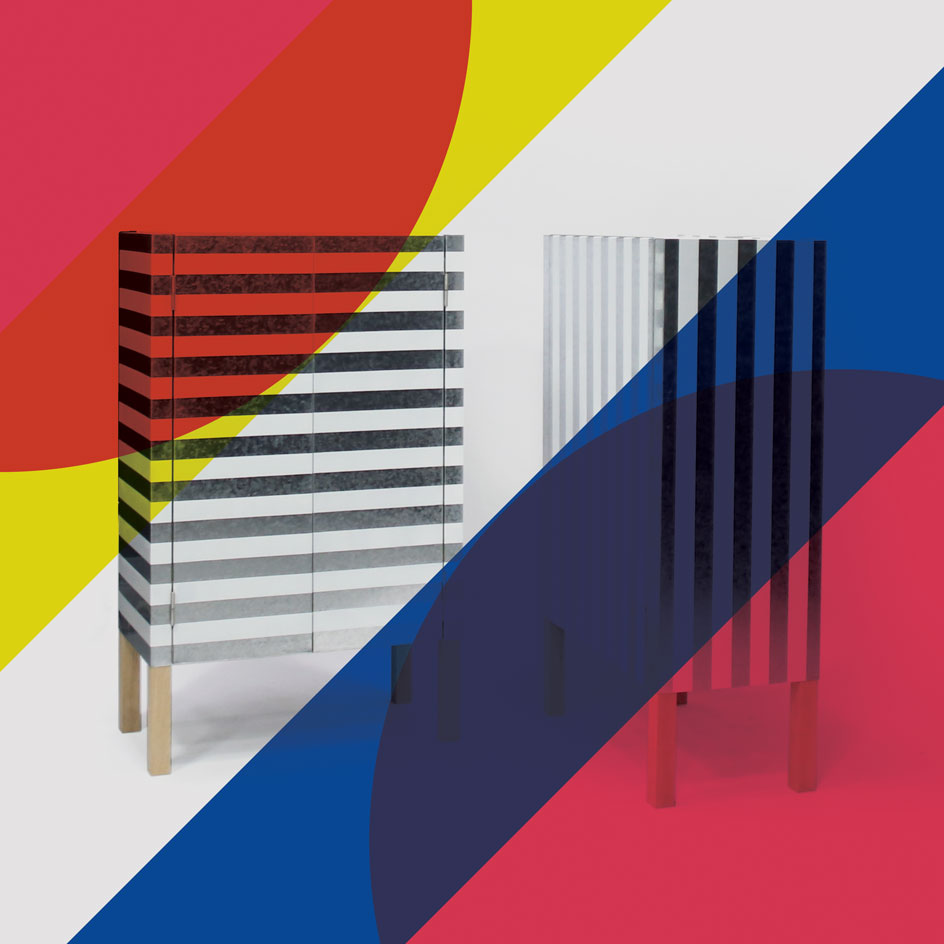
Stars and Stripes, a digital print by MIRO, offering a 21st century interpretation of Bauhaus’ themes concerning colour and shape
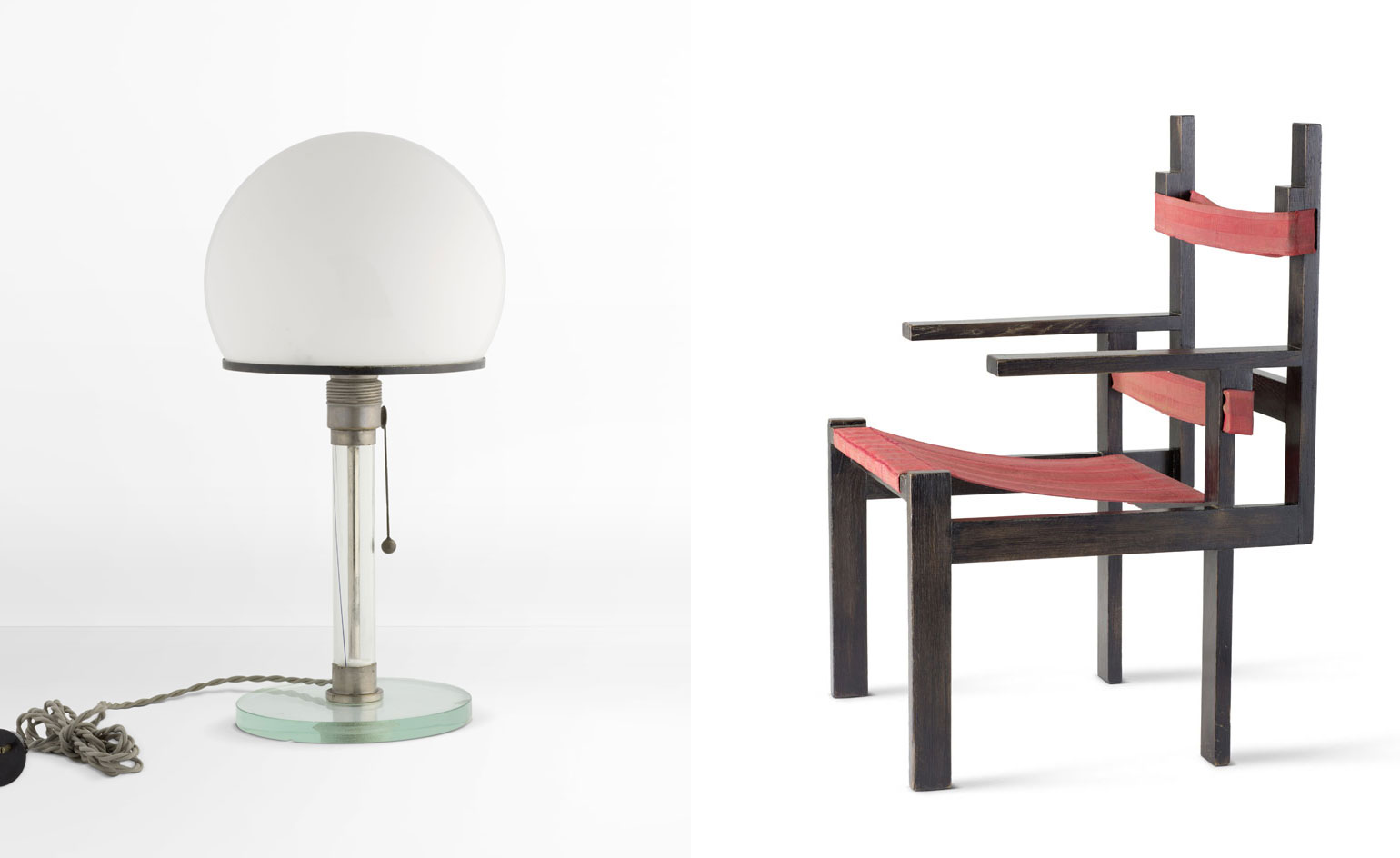
Pictured left: desk lamp by Wilhelm Wagenfeld and Carl Jakob Jucker from 1923. Right: ’ti 1a’ chair by Marcel Breuer, 1922
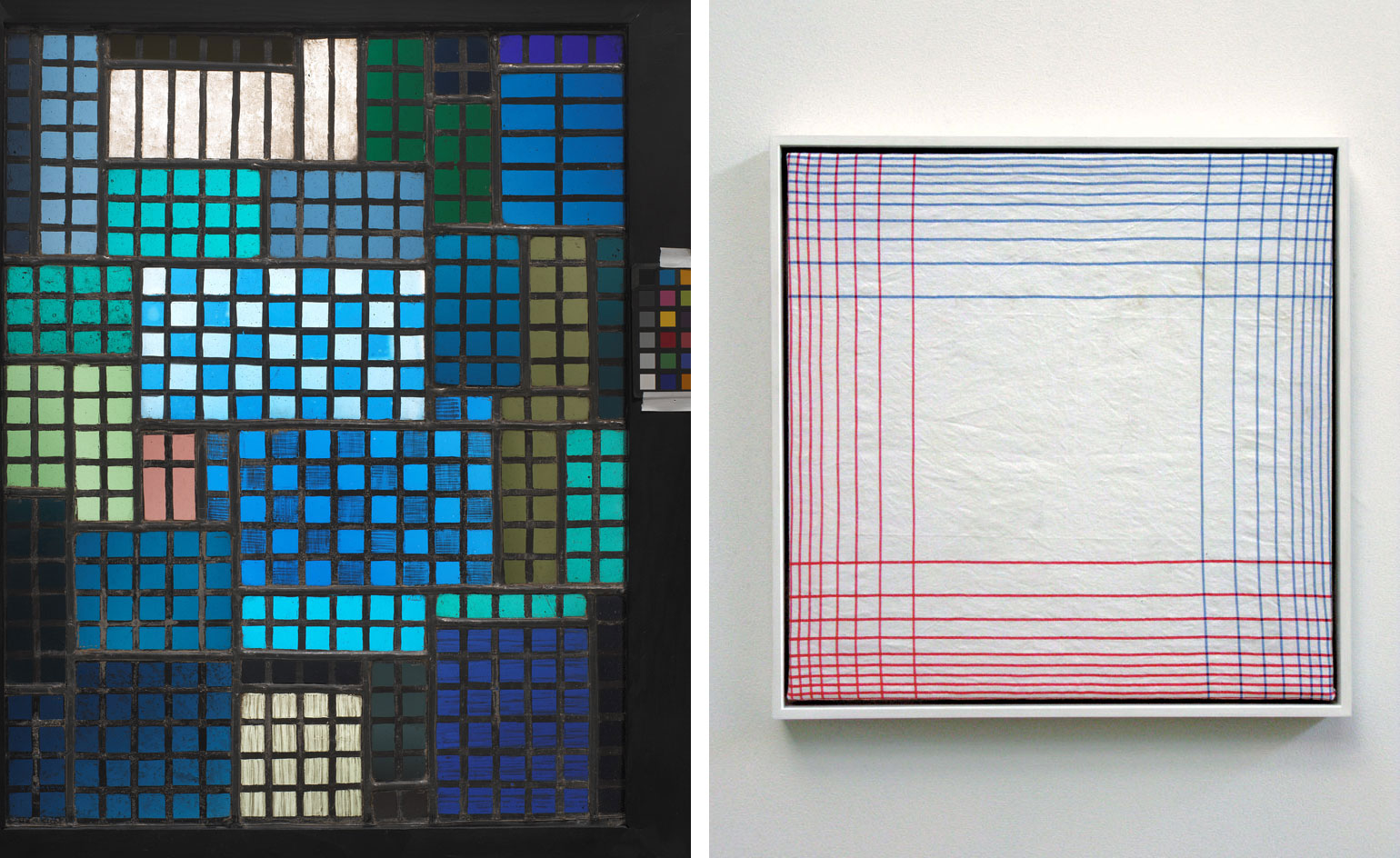
The exhibition plays on the juxtaposition of quintessential Bauhaus experiments and their influence on today’s creatives, as evinced in Josef Albers’ colour works (left), and Mike Meiré’s Bauhaus tribute from 2008 (right)
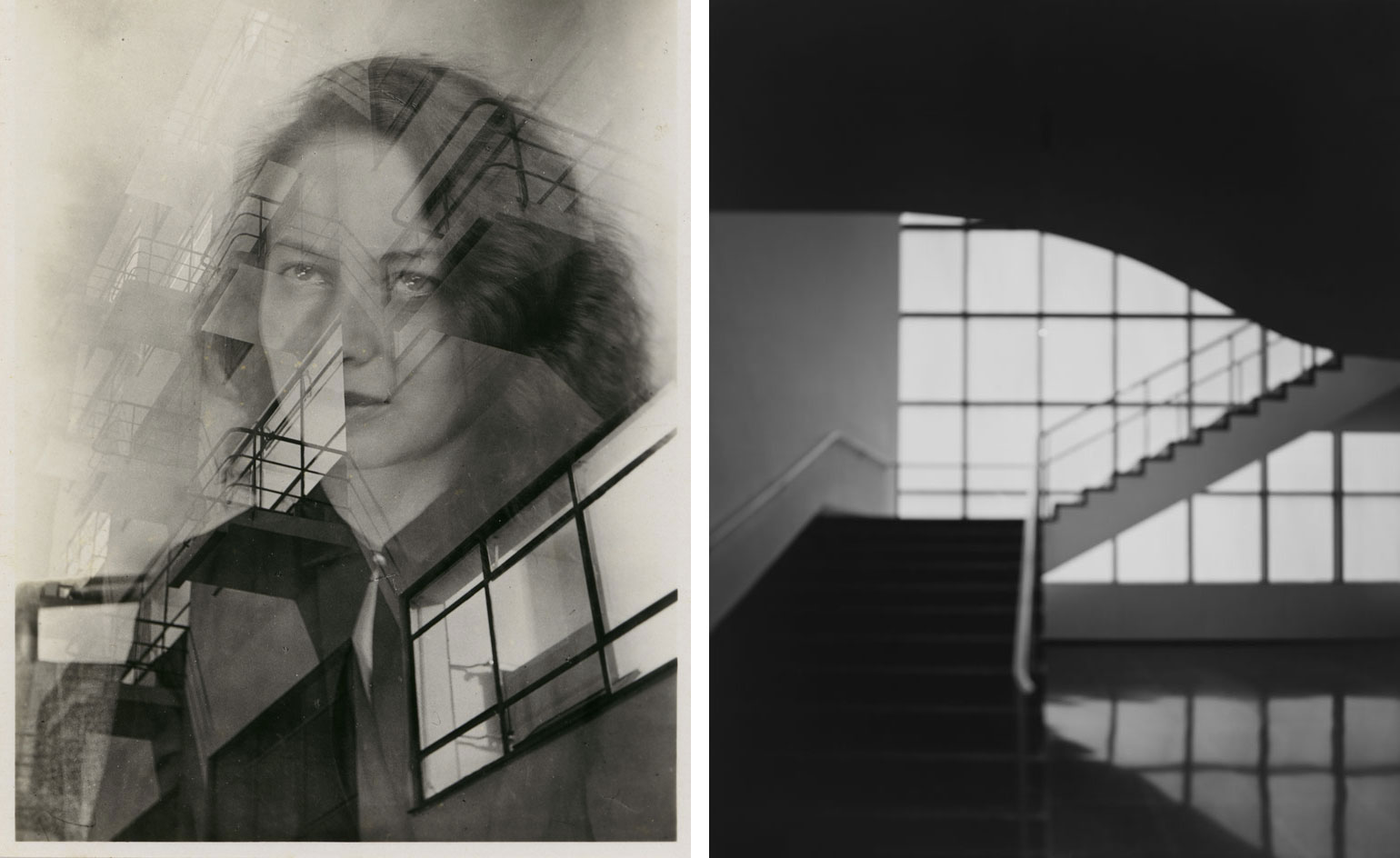
Archive photography completes the exhibition, offering visitors a glimpse of Bauhaus life and its players, as well as its iconic Dessau building. Pictured left: a double exposure by an unknown photographer of artist and weaver Otti Berger and the school’s facade, from 1931. Right: Hiroshi Sugimoto’s image of one of the stairways inside the building, from 2013
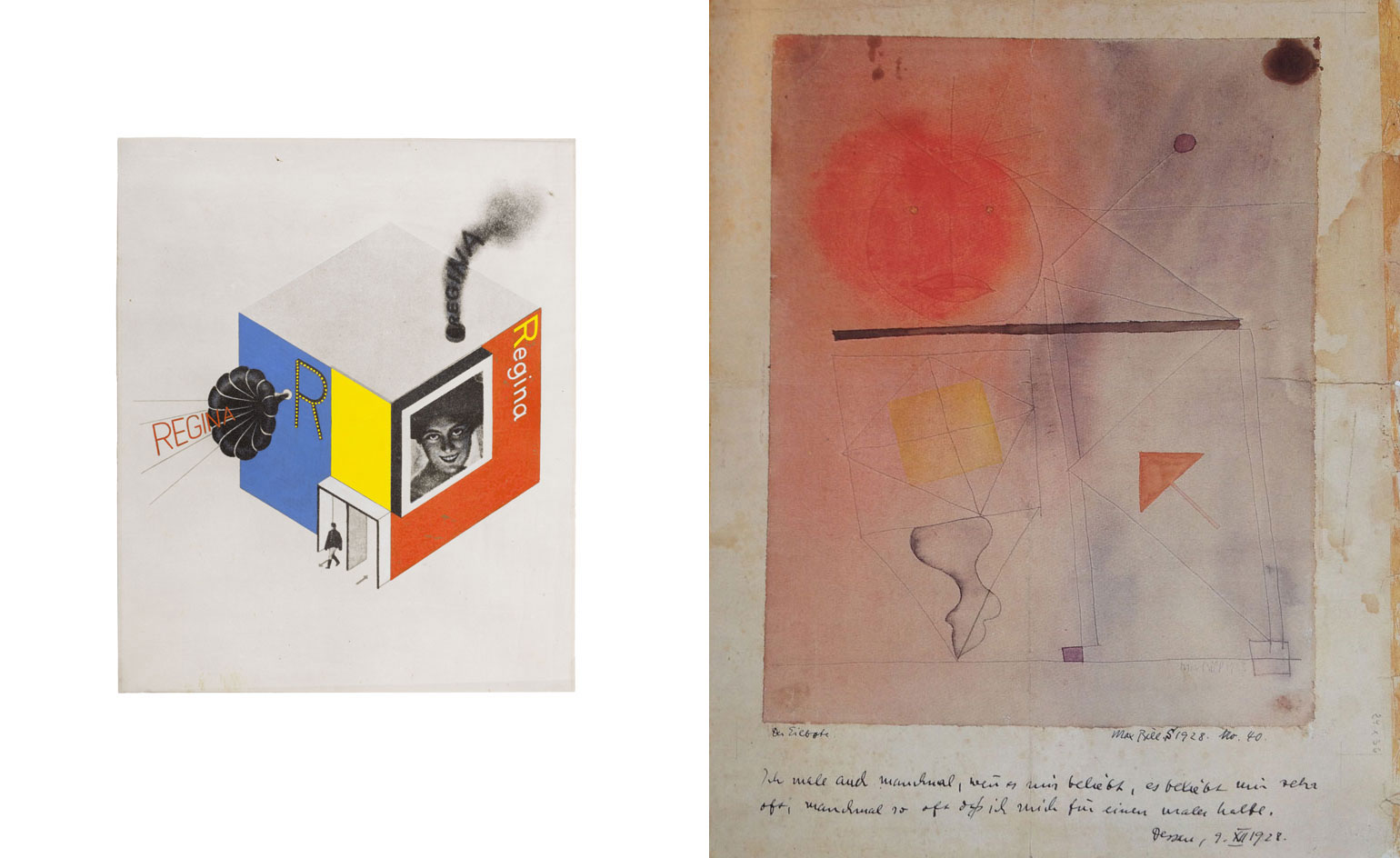
Pictured left: a design proposal for a multimedia exhibition by Herbert Bayer, 1924. Right: Max Bill’s Der Eilbote, a watercolour work from 1928
INFORMATION
’The Bauhaus #itsalldesign’ is on view until 28 Feburary 2016
ADDRESS
Vitra Design Museum
Charles-Eames-Str. 2
D-79576, Weil am Rhein
Wallpaper* Newsletter
Receive our daily digest of inspiration, escapism and design stories from around the world direct to your inbox.
Rosa Bertoli was born in Udine, Italy, and now lives in London. Since 2014, she has been the Design Editor of Wallpaper*, where she oversees design content for the print and online editions, as well as special editorial projects. Through her role at Wallpaper*, she has written extensively about all areas of design. Rosa has been speaker and moderator for various design talks and conferences including London Craft Week, Maison & Objet, The Italian Cultural Institute (London), Clippings, Zaha Hadid Design, Kartell and Frieze Art Fair. Rosa has been on judging panels for the Chart Architecture Award, the Dutch Design Awards and the DesignGuild Marks. She has written for numerous English and Italian language publications, and worked as a content and communication consultant for fashion and design brands.
-
 All-In is the Paris-based label making full-force fashion for main character dressing
All-In is the Paris-based label making full-force fashion for main character dressingPart of our monthly Uprising series, Wallpaper* meets Benjamin Barron and Bror August Vestbø of All-In, the LVMH Prize-nominated label which bases its collections on a riotous cast of characters – real and imagined
By Orla Brennan
-
 Maserati joins forces with Giorgetti for a turbo-charged relationship
Maserati joins forces with Giorgetti for a turbo-charged relationshipAnnouncing their marriage during Milan Design Week, the brands unveiled a collection, a car and a long term commitment
By Hugo Macdonald
-
 Through an innovative new training program, Poltrona Frau aims to safeguard Italian craft
Through an innovative new training program, Poltrona Frau aims to safeguard Italian craftThe heritage furniture manufacturer is training a new generation of leather artisans
By Cristina Kiran Piotti
-
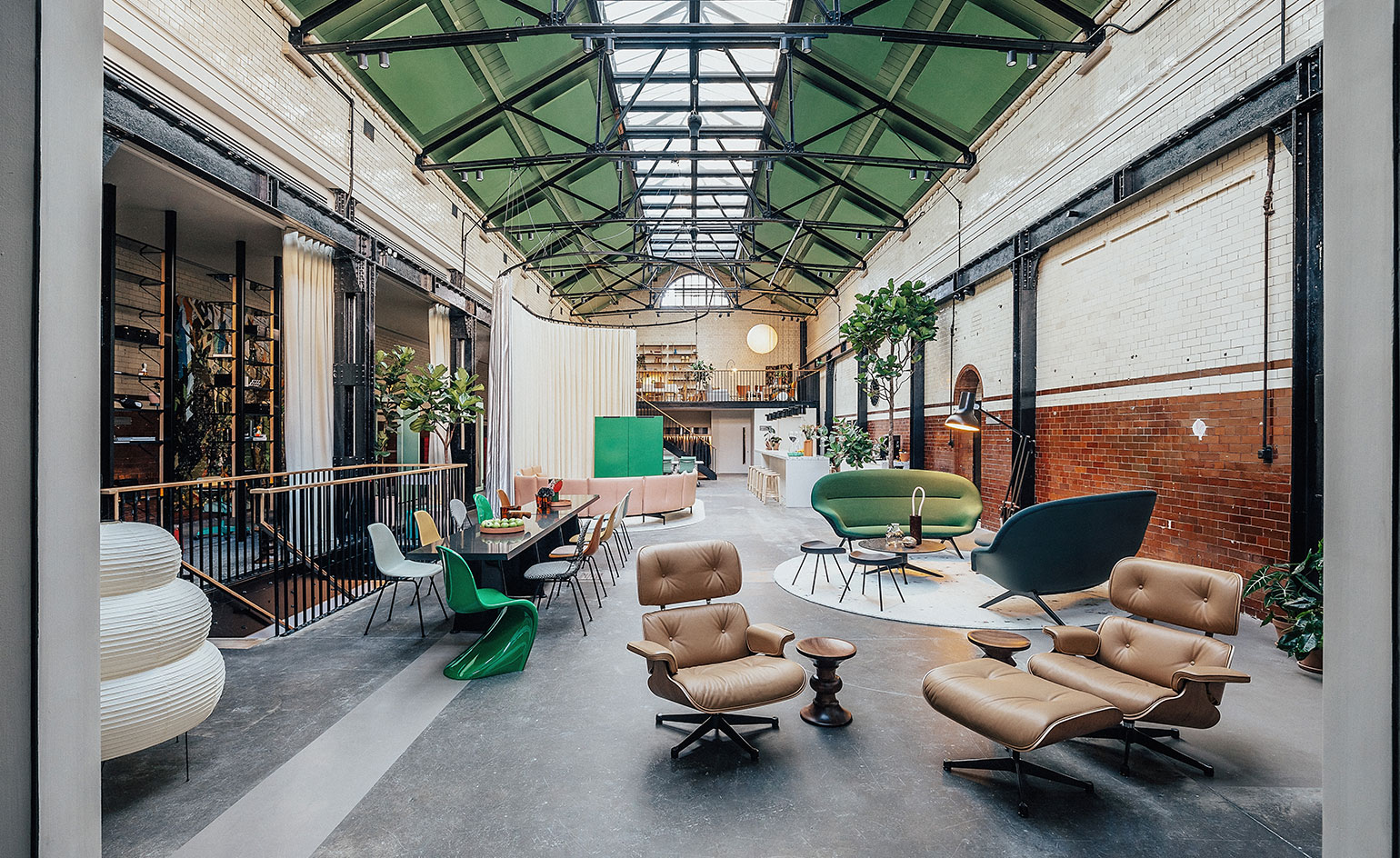 Vitra unveils new London home in the Tramshed, Shoreditch
Vitra unveils new London home in the Tramshed, ShoreditchLondon Design Festival 2022: after a year-long renovation, Vitra opens the door to its new showroom in the heart of Shoreditch
By Rosa Bertoli
-
 Saul Steinberg: behind the scenes at Triennale Design Museum
Saul Steinberg: behind the scenes at Triennale Design MuseumTriennale Design Museum and publishing house Electa present ‘Saul Steinberg Milano New York’, a new exhibition (until 13 March 2022) that pays homage to the American artist through 350 works. Join us for a behind-the-scenes peek at it's installation
By Rosa Bertoli
-
 Ten years of Muller Van Severen, at Design Museum Ghent
Ten years of Muller Van Severen, at Design Museum GhentA new exhibition by Belgian design duo Muller Van Severen (until 6 March 2022) features a retrospective of the studio’s ten years as well as a curation of pieces from the Design Museum Ghent collections
By Rosa Bertoli
-
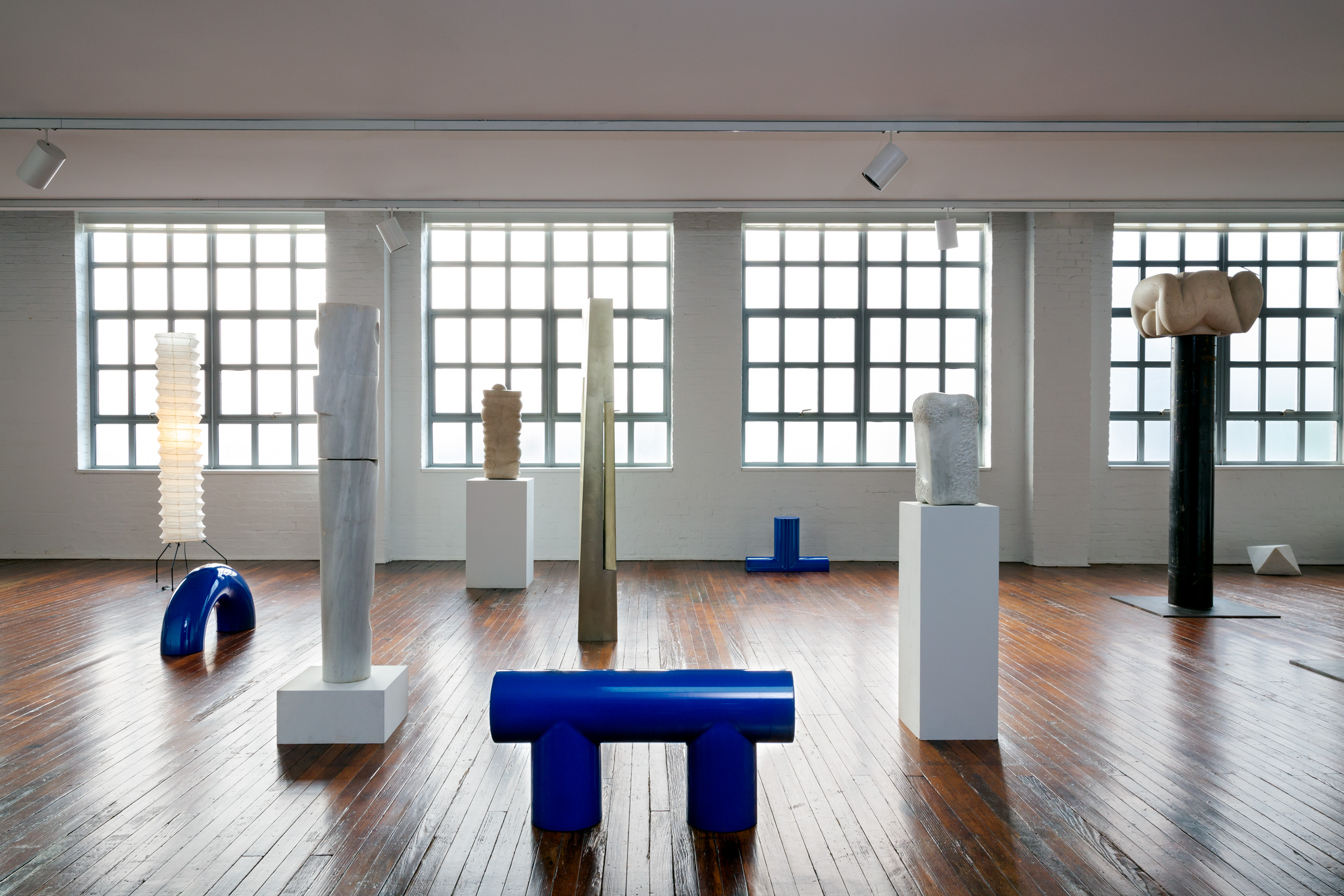 Noguchi show celebrates his reverence for Greece
Noguchi show celebrates his reverence for GreeceDesign show ‘Objects of Common Interest: Hard, Soft, and All Lit Up with Nowhere to Go’ opens in collaboration with Wallpaper* Designers of the Year, Objects of Common Interest, at the Noguchi Museum in Queens, New York (until 13 February 2022)
By Tilly Macalister-Smith
-
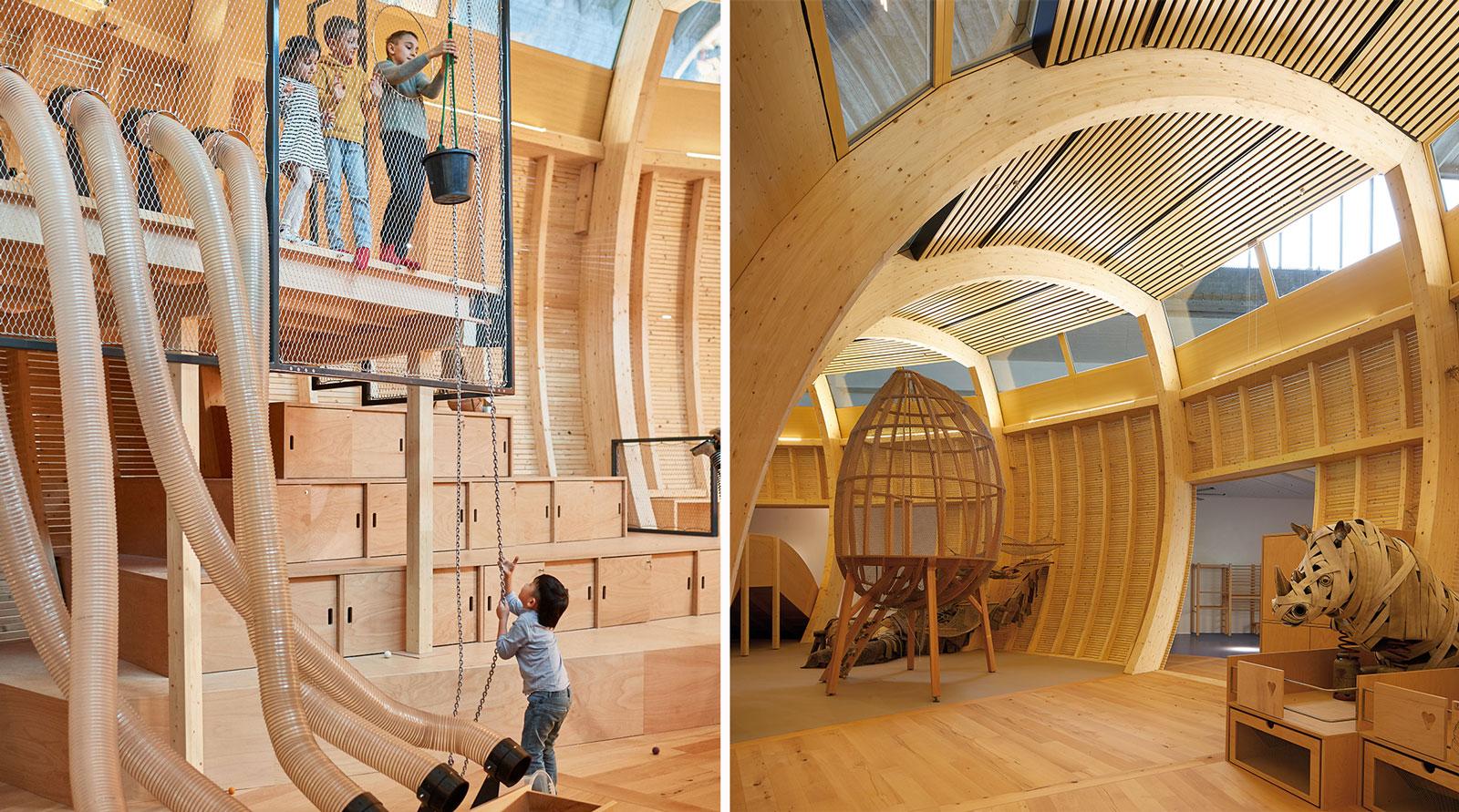 ‘Design not for children, but for everyone’: Jewish Museum Berlin’s new play space
‘Design not for children, but for everyone’: Jewish Museum Berlin’s new play spaceOlson Kundig architecture and design practice brings kids’ play space ANOHA Children’s World to life inside a vast former wholesale flower market, at the Jewish Museum Berlin
By Hannah Silver
-
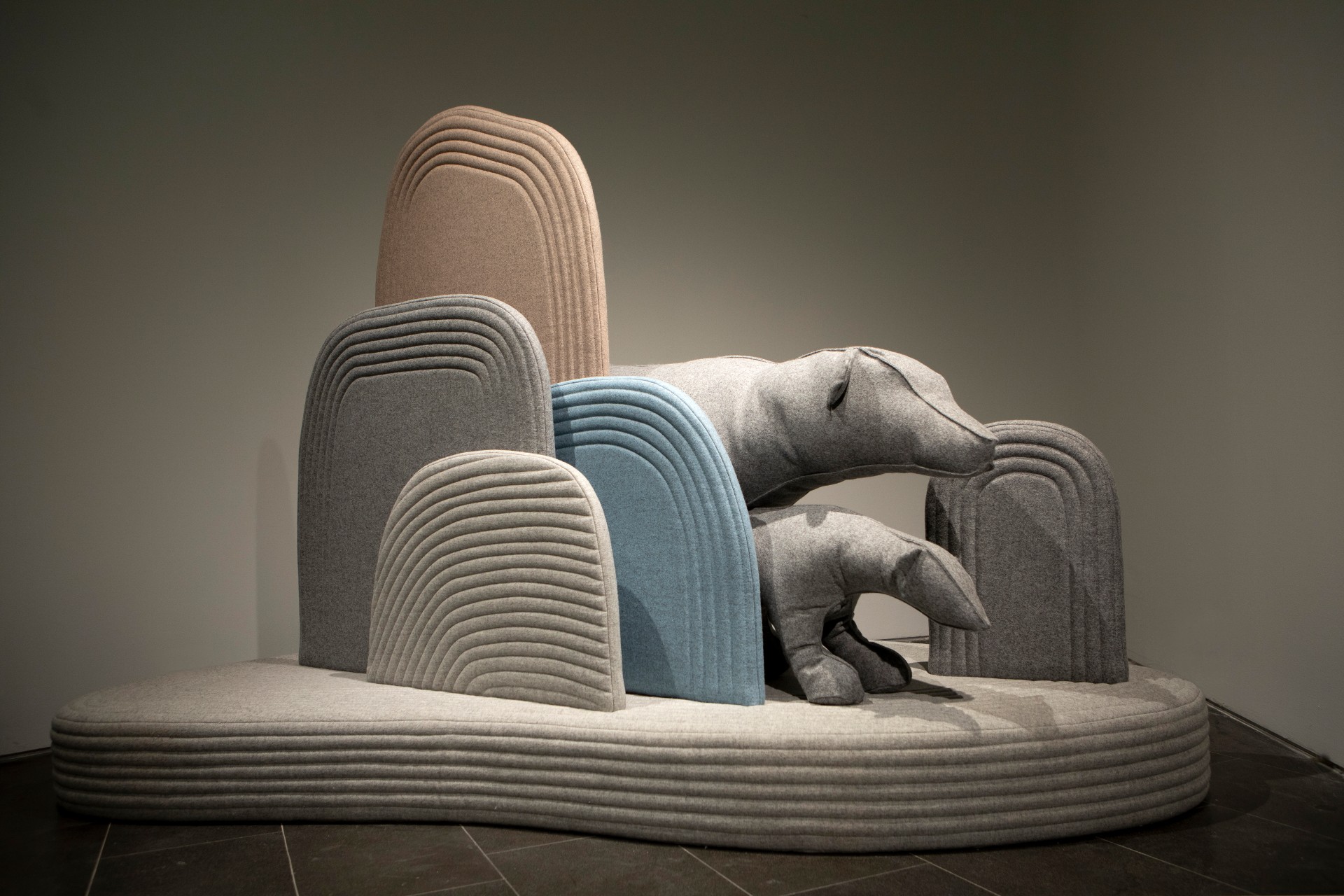 A landscape of playful animals pops up at Design Museum Holon
A landscape of playful animals pops up at Design Museum HolonChild-centric designer Sarit Shani Hay presents an imaginary natural landscape that references Ron Arad's Design Museum Holon architecture and is inhabited by soft, cushioned sea lions, seals and bears
By Rosa Bertoli
-
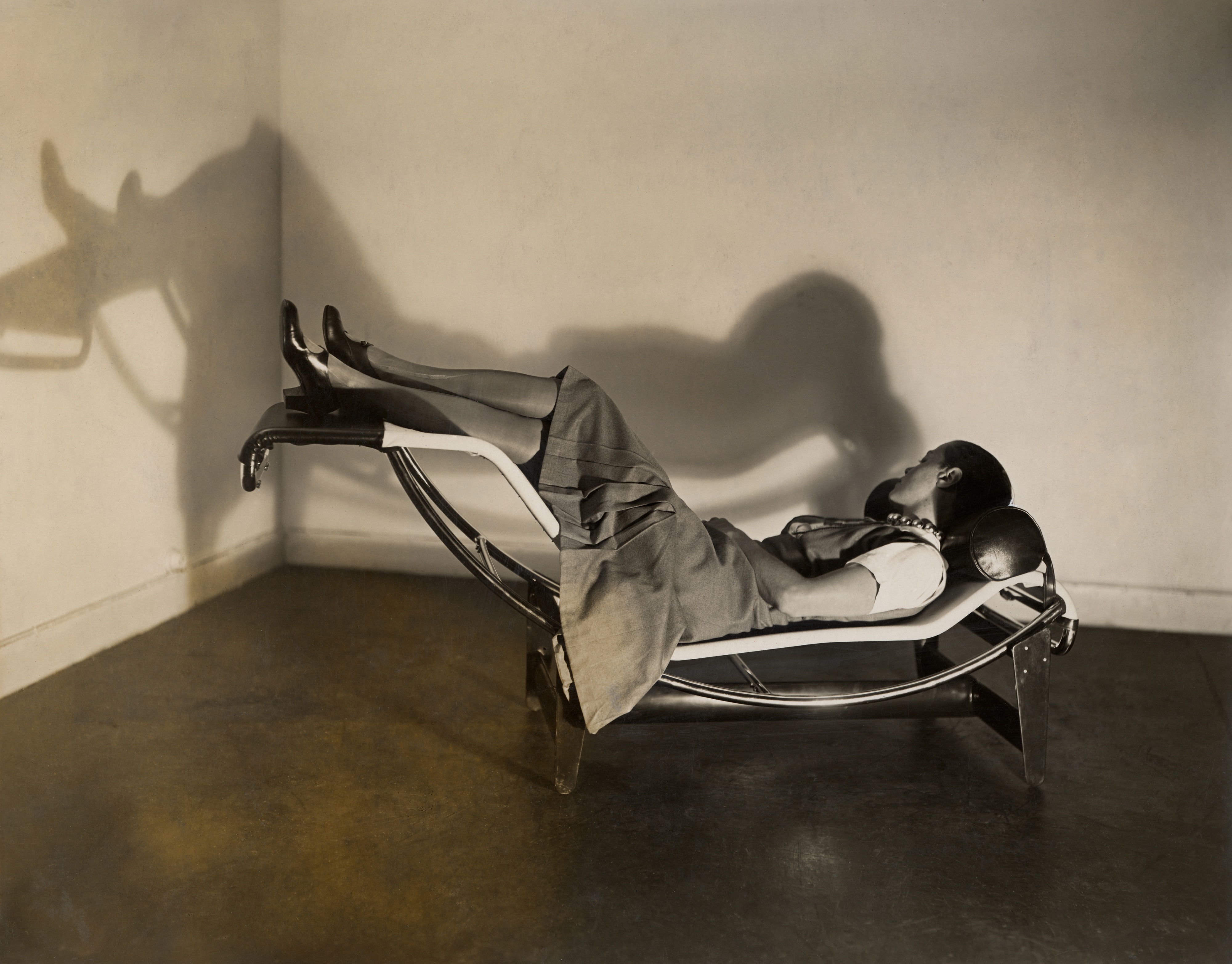 Charlotte Perriand’s life and work explored at London’s Design Museum
Charlotte Perriand’s life and work explored at London’s Design MuseumLondon’s Design Museum presents ‘Charlotte Perriand: The Modern Life’, an exhibition turned the spotlight on one of the most iconic creators of the 20th century
By Rosa Bertoli
-
 Meet the Design Museum’s all-female Designers in Residence
Meet the Design Museum’s all-female Designers in ResidenceThe multidisciplinary cohort includes Enni-Kukka Tuomala, Abiola Onabule, Cynthia Voza Lusilu and Ioana Man, who developed a series of multidisciplinary projects with the Design Museum, responding to the theme of ‘Care'
By Rosa Bertoli